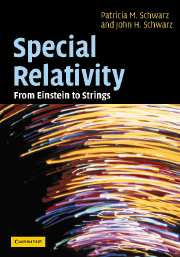Preface
Published online by Cambridge University Press: 06 July 2010
Summary
Towards the end of the nineteenth century many physicists believed that all the fundamental laws that describe the physical Universe were known, and that all that remained to complete the understanding was an elaboration of details. The mind-boggling error of this viewpoint was laid bare within a few short years. Max Planck introduced the quantum in 1899 and Albert Einstein's breakthrough work on special relativity appeared in 1905. The ensuing relativity and quantum revolutions each led to surprising and unexpected concepts and phenomena that have profoundly altered our view of physical reality. The science and the history associated with each of these revolutions has been told many times before. But they are worth coming back to again and again with the added benefit of historical perspective. After all, they have changed the world scientifically, technologically, and philosophically. Perhaps due to the lesson from a century ago, very few people today are so foolish as to speak of an “end of science”. In fact, revolutionary advances in theoretical physics are currently in progress, and we seem to be a long way from achieving a settled and final picture of physical reality.
As the title indicates, this book is about the special theory of relativity. This theory overthrew the classical view of space and time as distinct and absolute entities that provide the backdrop on which physical reality is superimposed. In special relativity space and time must be viewed together (as spacetime) to make sense of the constancy of the speed of light and the structure of Maxwell's electromagnetic theory.
- Type
- Chapter
- Information
- Special RelativityFrom Einstein to Strings, pp. xi - xiiPublisher: Cambridge University PressPrint publication year: 2004

